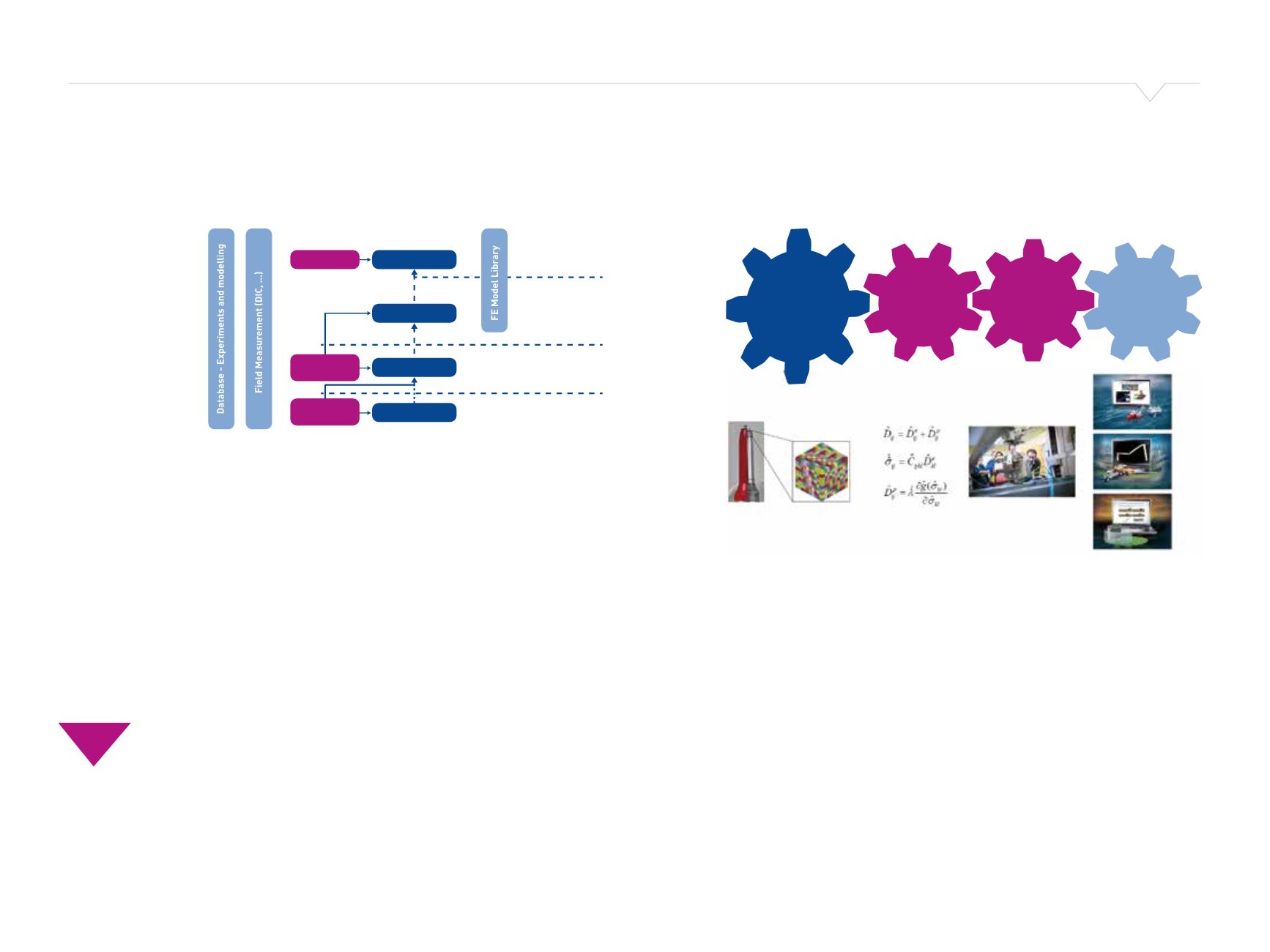

19
techNOlOGy traNSfer
Methods and Tools
Heads of Programme: Odd-Geir Lademo and Térence Coudert
Industrial Implementation
Head of Programme: Magnus Langseth
The Methods & Tools Programme is to provide a synthesis of the research carried out to facilitate industrial
implementation, see Figure 10. In other words, it represents the main instrument to link the Basic research in
the Centre and the Industrial implementation at the industrial partners. The work will build upon prior research
carried out by NTNU and SINTEF, in particular the research platform generated over the last eight years in the
SFI SIMLab, and the associated SIMLab Toolbox. The SIMLab Toolbox will be further developed by enhancing
the prediction accuracy, efficiency and robustness of existing models and methods and include novel models
and methods based on the basic research programmes. It is planned that the SIMLab Toolbox will support the
necessary steps to build a reliable finite element model for advanced structural analysis, including:
• a database solution to store and get access to experimental data and protocols;
• field measurement software to extract accurate data from tests;
• a multi-scale calibration tool to identify the parameters of the proposed models;
• a model library with constitutive models for the different materials used by the partners;
• a set of multi-scale solvers used to develop and improve existing models.
The development work is performed in a professional software development arena
’code.sintef.no’, which
enables team-oriented development through proper systems for documentation, version control and issue
tracking. Through this portal personnel from all Centre partners may also be granted access in order to co-
develop and tailor tools. In 2015, some preparatory measures have been taken to ensure maximum efficiency,
robustness, and quality assurance of the further team-based development, primarily through definition of each
existing tool through scenario-based design technique, and by the establishment and initial implementation
of a system for automated testing of tools. A draft of a possible architecture for an overarching multi-scale
framework has been crafted, that will be subject to revisions based on discussions with user partners in 2016.
Macroscale
Crystal-Mesoscale
Microscale
Atomscale
Experiments
MacroMat
MesoMat
MicroMat
Microstructure
Experiments
Atom scale
Experiments
NanoMat
Figure 10:
Draft of
multi-scale
framework
Figure 11 illustrates the important interlink between Basic research, Technology transfer and Industry. Here
the Industrial implementation programme will be the link between the Methods & Tools programme and the
industrial use of the research and technology developed at the Centre for Innovation. To strengthen the industrial
implementation of the research and the cooperation between the partners, an Industrial Reference Group with
experts from the partners, supported by professors/scientists from NTNU and SINTEF, has been established. This
group will monitor all new developments and assist in the implementation of these at the user partners. The
reference group will also at any time evaluate the needs each partner has for support from NTNU and SINTEF in
the implementation. The exchange of personnel between the research group and the user partners, industrial PhD
candidates and employment of graduate students at the partners will be other means to strengthen the industrial
implementation. Establishing concurrent research and development projects with the partners represents an
opportunity for technology transfer and enhanced innovation at the user partners. In order to strengthen the
share of information across business sectors and between the partners during the industrial implementation,
case studies and demonstrators will be used and presented at seminars. Here the user partners representing
each of the business sectors oil and gas, physical security and transportation will present typical engineering
problems and best practice for modelling. This will contribute to a better understanding of the challenges of the
user partners and how advanced structural analysis may be used to meet them.
Multi-scale
testing,
modelling and
simulation
Methods
&
Tools
Industrial
implementation Innovation
Basic research
SFI-CASA
Technology transfer
Industry
Figure 11: From research to innovation
Technology transfer


















